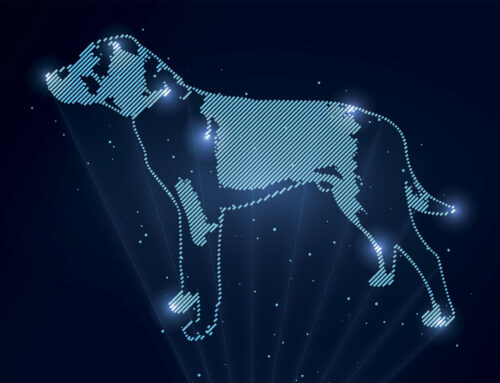 Chris Conway
Chris Conway
Chief Architect, Quantiv
The approaching winter solstice has got me thinking about the different traditions and festivals that have light and reflection as central themes.
There’s Christmas of course, and also Diwali and Hanukkah, to name just a few.
And as well as the many words associated with each event, there are numerous pictures, symbols and icons, too. In fact, images often representing light are familiar features of each of these festivals.
Christmas and its secular traditions
Using Christmas as an example, there are many secular traditions that have developed around this religious event. And in those traditions, images have become even more widespread – trees, snowmen, Santa Claus, elves, reindeer… the list goes on – while the words associated with those traditions are often captured in song.
We’ve even developed ways to distribute those images. And for all the expansion of electronic communication, greeting cards remain one of the popular methods of sending festive cheer to our relatives and friends.
Although words have been associated with religion for thousands of years, they were often the preserve of a very select few. Literacy was a rare skill until comparatively recently, and so images – and songs – were essential to convey ideas to a wider audience. For many, their experience of religion was defined by those seasonal images and songs.
But I’d also like to think this is a testament to the power of a good image (with caveats – see my earlier blog).
What can an image do?
- You can use a simple image to communicate information clearly and succinctly, and to cross language divides.
- You can make complex ideas much more concrete (something that isn’t always possible with words alone).*
- You can even use images to arrange words (infographics).
(*As an aside, there’s an interesting contrast here between ‘technical’ and ‘fictional’ writing. In technical writing, making an idea concrete is desirable so the author’s meaning is clear. But in fictional writing, the author may prefer the reader to use their own imagination.)
But as well as helping the reader, or viewer, to understand an idea, creating an image can also help a writer or designer to clarify their thoughts.
Images clearly show structures and their interactions in ways that aren’t as apparent using words alone. This means the process of creating the image often highlights omissions and contradictions present – but not obvious – in a textual description.
You can’t control what you can’t measure…
So, there’s perhaps now another addition to the old business adage: ‘You can’t control what you can’t measure.’
The first addendum is already well established, i.e. ‘You can’t measure what you can’t describe.’
And I think we also need the following phrase: ‘You can’t describe what you can’t picture.’
The power of strong visual language
But I’m not suggesting we all need to become Leonardo da Vinci to succeed at systems analysis (although he was rather good).
What I am saying is that good visual language is critical to describing organisational processes (and that’s why Quantiv’s NumberWorks method uses such patterns).
This vocabulary doesn’t have to be elaborate, as boxes and lines will do (maybe more Mondrian than da Vinci!).
But it’s important to have this language, as it provides some consistency to how the symbols are used. The same symbol should mean the same thing, in the same context.
And as this time of year reminds us, these aren’t new rules. They’ve been used (perhaps subconsciously) for centuries in those seasonal traditions.
And yet, we can still draw new lessons from them.
Season’s greetings from the Quantiv team!
Wishing you a Merry Christmas and a happy and healthy New Year.




